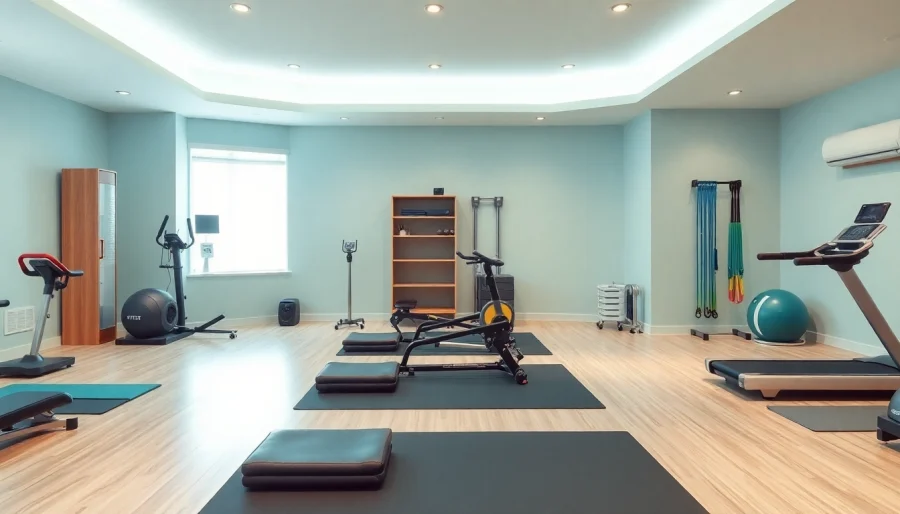Understanding Rehabilitation Equipment
Rehabilitation equipment plays a crucial role in the recovery and growth process of individuals who have undergone surgery, injury, or have chronic conditions. These tools not only assist in physical recovery but also help boost psychological morale. An effective Rehabilitation Equipment Supplier understands the diverse needs of patients and healthcare providers and offers equipment that caters to these requirements.
Importance of Quality Equipment in Rehabilitation
The importance of high-quality rehabilitation equipment cannot be overstated. Quality equipment ensures the following:
- Durability: Equipment that can withstand frequent use without failing is essential in a rehabilitation environment.
- Safety: Well-designed equipment minimizes risks associated with training and exercises, such as falls or injuries.
- Effectiveness: Quality tools help achieve better patient outcomes by enabling the correct rehabilitation exercises tailored to individual needs.
Types of Rehabilitation Equipment Offered by Suppliers
Rehabilitation equipment comes in various forms, each designed for specific therapy needs:
- Mobility Aids: Walkers, canes, and wheelchairs that assist in patient mobility.
- Exercise Equipment: Resistance bands, balance balls, and therapy weights designed for strength building.
- Therapeutic Devices: Ultrasound machines, electrical stimulation devices, and hydrotherapy equipment.
- Occupational Therapy Tools: Tools and devices tailored to improve daily living activities and fine motor skills.
Key Benefits of Quality Rehabilitation Equipment
Improving Patient Outcomes with Proper Equipment
Using the right quality equipment can significantly impact patient recovery. Studies have shown that when patients use equipment tailored to their particular condition, they show improved recovery rates and more significant gains in strength and mobility. Tools like gait trainers and specialized exercise machines are designed to help reduce the time needed for recovery and assist in achieving optimal results.
Enhancing Safety and Comfort during Therapy
Quality rehabilitation equipment is designed with the patient’s comfort and safety in mind. Features like padded handles, adjustable heights, and non-slip surfaces ensure that patients can use the equipment without discomfort or fear of injury. Enhanced comfort also contributes to better engagement during therapy sessions, leading to improved outcomes.
Cost-Effectiveness of Investing in Quality Supplies
Though quality rehabilitation equipment may come with a higher upfront cost, the long-term benefits far outweigh these initial expenses. High durability means lower maintenance and replacement costs over time. Additionally, improved patient outcomes translate to decreased overall healthcare costs, making the investment more cost-effective for institutions.
How to Evaluate Rehabilitation Equipment Suppliers
Criteria for Choosing a Rehabilitation Equipment Supplier
When evaluating rehabilitation equipment suppliers, consider the following criteria:
- Product Variety: The best suppliers offer a wide range of equipment, ensuring that you can find everything you need in one place.
- Quality and Compliance: Suppliers should adhere to safety standards and offer equipment certified by relevant health authorities.
- After-Sales Support: Reliable suppliers provide ongoing support, including maintenance and replacement options during the lifespan of the equipment.
Comparing Services and Warranties from Different Suppliers
Service offerings and warranty terms can differ vastly between suppliers. Ensure to compare warranties thoroughly, as comprehensive warranties may indicate a manufacturer’s confidence in their products. Additionally, assess additional services like delivery, setup, and staff training, which can significantly impact your decision.
Checking Client Testimonials and Reviews
Researching client testimonials and reviews is an excellent way to gauge the reputation of a rehabilitation equipment supplier. Look for feedback regarding responsiveness, equipment quality, customer service, and overall satisfaction. This insight is invaluable when making an informed decision.
Innovations in Rehabilitation Equipment
Emerging Technologies in Rehabilitation Supplies
Technology continues to revolutionize the field of rehabilitation. Innovations like virtual reality (VR) therapy, robotic-assisted rehabilitation devices, and biofeedback systems are making therapy engaging and effective. These technologies enhance patient motivation and can personalize rehabilitation programs tailored to individual needs.
Trends to Watch for in Rehabilitation Equipment
Several trends are shaping the future of rehabilitation equipment:
- Tele-Rehabilitation: Remote therapy options are becoming commonplace, allowing for greater accessibility and flexibility.
- Smart Technologies: IoT devices that track patient progress and provide feedback during rehabilitation sessions.
- Personalized Therapy: Equipment that adapts to the patient’s specific progress and needs offers a tailored therapy experience.
Impact of Technology on Patient Recovery
The integration of technology in rehabilitation has been transformative. Patients using advanced equipment often experience shorter rehabilitation times and improved engagement. For instance, using motion-tracking devices can provide both therapists and patients with real-time feedback, optimizing therapy sessions and outcomes.
Implementing Rehabilitation Equipment into Therapy Practices
Best Practices for Using Rehabilitation Equipment
To maximize the effectiveness of rehabilitation equipment, facilities should follow best practices such as:
- Customized Programs: Tailor rehabilitation exercises to fit individual patient needs. Every recovery journey is unique.
- Regular Maintenance: Ensure that all equipment is regularly inspected and maintained to meet safety standards.
- Integrative Approaches: Combine various types of equipment for a well-rounded rehabilitation experience.
Training Staff on New Rehabilitation Equipment
Proper staff training is essential when introducing new rehabilitation equipment. Comprehensive training ensures that all team members are knowledgeable about the equipment’s features, usage guidelines, and maintenance requirements. This investment in staff education not only enhances patient care but also increases employees’ confidence in managing the rehabilitation process effectively.
Monitoring and Measuring the Effectiveness of Equipment
After implementation, monitoring the effectiveness of rehabilitation equipment is crucial to ensuring optimal patient outcomes. Utilize performance metrics to measure improvements in patient strength, mobility, and overall progress. Regular assessments allow for timely adjustments to rehabilitation programs as needed, maximizing the value of both the equipment and the therapeutic process.
